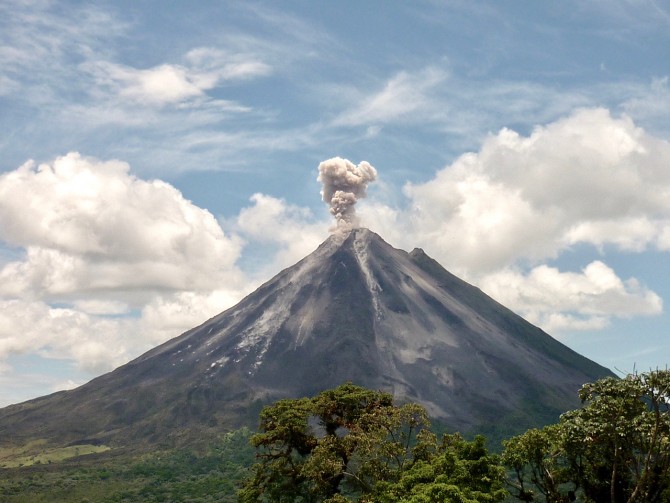Scientists aim to broaden knowledge of volcanoes
By Erin Philipson
Every year at least 50 volcanic eruptions affect more than 10% of the world’s population. Some eruptions, like Mount Pinatubo in 1991 and Laki in 1783, were so powerful that they impacted the climate of the entire planet.
A research team from the Department of Earth and Atmospheric Sciences has received a $1.4 million grant from NASA to lead a study of how volcanic ash from past eruptions affected the Earth, and the potential impact of future eruptions. The project involves collaborators from the National Oceanic and Atmospheric Administration and the Jet Propulsion Laboratory, among other institutions.
Volcanoes are the main locations for energy and mass exchange between the interior of the Earth and the atmosphere, and thus play a critical role in the climate and habitability of the planet. Volcanic ash can impact air quality, disrupt aviation and change ocean biogeochemistry, among other effects. The research team will study these impacts by integrating volcanology, remote sensing and atmospheric sciences to understand the relationship between volcano pre-eruptive behavior, geochemical signatures, and ash composition.
“The study will focus on micro- and nano-fraction volcanic ash components that are generally not considered traditional volcanology studies,” said Esteban Gazel, associate professor of earth and atmospheric sciences. “This is critical as these materials can travel miles away from the primary volcanic hazard source and trigger the most substantial global impact.”
Over the past decade, volcanic ash emissions have not been well characterized and have not been included in Earth system models. The research team is combining remote sensing with volcanic eruption measurements to address an important and under-studied question: What is the role of volcanic ash in current and future climate and biogeochemistry?
“For the first time, we will create a database of satellite observations of volcanic ash from the 250 largest volcanic eruptions between the years 1978 and the present,” said Matthew Pritchard, professor of earth and atmospheric sciences. “We will then use the database, along with in-situ chemistry observations, as input to Earth system models to understand the impact of the ash on temperature, precipitation and feedbacks with life in the ocean and on land.”
Not only will the team characterize past emissions, but they will look for predictive capabilities – first by identifying relationships between pre-eruptive gas, thermal emissions, ground displacement, and the composition of eruptive material. Then they will use past records of emissions from volcanic eruptions to assess the importance of future eruption scenarios that can impact the Earth.
The findings of this project aim to improve the understanding of volcanic aerosols and to what extent background eruptions are modifying aerosol distributions, weather, climate and biogeochemistry. The study also aims to test whether the characteristics of pre-eruptive unrest are related to eventual erupted material and evaluate the potential impacts of large eruptions in the future.
“Volcanoes are one of the most powerful forces of nature and have long lived in human psychology as an incredible force – think of Atlantis or the goddess Pele,” said Natalie Mahowald, the Irving Porter Church Professor of Engineering. “With this project we will link volcanology, remote sensing and climate science to bring our understanding of volcanoes into the 21st century to see how volcanoes can change climate.”
Erin Philipson is a communications specialist for the College of Engineering.
Media Contact
Get Cornell news delivered right to your inbox.
Subscribe

